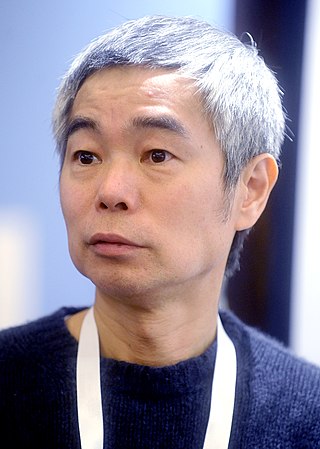Top Qs
Timeline
Chat
Perspective
Taiyō Matsumoto
Japanese manga artist From Wikipedia, the free encyclopedia
Remove ads
Taiyō Matsumoto (Japanese: 松本 大洋, Hepburn: Matsumoto Taiyō, born October 25, 1967) is a Japanese manga artist.
Remove ads
Career
Summarize
Perspective
Matsumoto was born in Tokyo. Originally, he wanted to become a soccer player, but changed to artist as an occupation instead. After his initial success in the Comic Open contest, he began touring France in 1986, an event that became a significant point in his career.[9]
Matsumoto published his first manga in 1987 at the age of 20 in Kodansha's Morning magazine. While he published a few works there, he didn't gain enough popularity and was eventually not able to publish anymore in big magazines like Morning. Instead, he came in contact with Yasuki Hori, editor at Shogakukan, who pushed him to draw a manga about boxing, which became Zero and was published in the magazine Big Comic Spirits between 1990 and 1991.[10]
In 1993, he began work on the Tekkonkinkreet manga, which became a success in the Big Spirits magazine, and published a series of short stories in a collection called Nihon no Kyodai that was publicized at the time by Comic Aré magazine. Ping Pong appeared in Big Spirits in 1996, soon followed by the series No. 5 in Shogakukan's Monthly Ikki magazine in 2000.[9][11]
The Tekkonkinkreet anime was released in Japan in late 2006, and both the anime and manga have been published in English.[12]
Remove ads
Style
Summarize
Perspective
The manga he produced covers a variety of topics, from sports manga to family comedies to science fiction epics. Manga critic Natsume Fusanosuke divided his manga series in 2021 into different distinct categories: Manga like Zero, Hanaotoko and Ping Pong that work within the artistic framework of shōnen manga and seinen manga and that were developed with the pressure of editors in mind that wanted him to fit into the industry's standards. However, dystopian science-fiction manga like Tekkonkinkreet and No. 5 as well as the autobiographical orphanage story Sunny in a lot of ways break with many conventions of the manga industry's norms. Fusanosuke analyzes that these manga follow a path that has been developed after the success of Katsuhiro Otomo and are influenced by French bande dessinée.[10]
His work is seen as "meta manga", often criticizing the genres within which they operate.[10]
Matsumoto draws free-hand, with sketchy wavering lines. He often uses extreme close-ups with perspectives inspired by a fisheye lens, which creates a cinematic effect. He also experiments with panel composition, using it for example in Ping Pong to evoke the feeling of speed.[13]
Matsumoto has cited Moebius, Enki Bilal, Katsuhiro Otomo, Shotaro Ishinomori and Tsuchida Seiki as influences on his work.[14] He has been influenced by the New Wave movement in manga.[15]
Remove ads
Reception
Summarize
Perspective
Ping Pong and Blue Spring have been adapted into live-action feature films. Animation studio Studio 4°C adapted Tekkonkinkreet into an animated feature film, it was released in Japan in late 2006, and both the anime and manga have been published in English.
Matsumoto influenced younger manga artists like Eiichiro Oda,[16] Masashi Kishimoto,[17] and Daisuke Igarashi.[18]
He has won several awards, including the Shogakukan Manga Award, the Tezuka Osamu Cultural Prize and Eisner Award:
Personal life
Matsumoto's wife is manga artist Saho Tono, who collaborated with him on Sunny.[28] He is the cousin of Santa Inoue, another manga artist.
Works
Remove ads
References
External links
Wikiwand - on
Seamless Wikipedia browsing. On steroids.
Remove ads

